Signs That You Might Need Braces
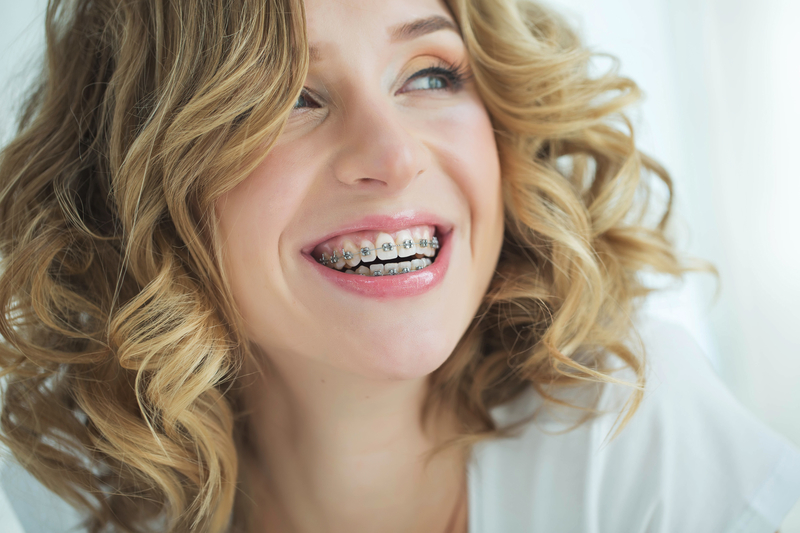
For many patients, getting braces is a big decision that affects oral health. How do you know whether you or your child needs braces, though? Some symptoms are obvious: misplaced or crowded teeth, or teeth that don’t meet normally. Other signs that you need braces are more inconspicuous, though, such as biting the cheek or a jaw that pops or shifts. While some of these symptoms are more serious than others, orthodontic care is the way to go to alleviate pain and correct any underlying issues. Learn about what signs you should be looking for to decide if braces are right for you with these tips!
What To Look Out For
As our teeth begin to erupt at a young age, they can fill into improper spaces or cause problems with adjacent teeth. Crooked or misaligned teeth aesthetically aren’t very pleasing for people, and most patients end up receiving orthodontic treatment during some point in their lives. Orthodontic problems don’t always mean crooked teeth, though. While there are some obvious signs that you might benefit from orthodontics, such as crowded teeth or an underbite/overbite, there are other symptoms that are less noticeable but equally as undesirable. The American Association of Orthodontics recommends that children have their first orthodontic visit between the ages of 7 and 8, but if certain complications are present, your child does not and should not wait until that age to be seen. If you have a young child, look for some of the following symptoms that warrant orthodontic care:
- Thumb or finger sucking
- Early, late or irregular loss of baby teeth
- Difficulty in chewing or biting
As children age, orthodontic problems will begin to show themselves, but some don’t appear until adulthood. No matter your age or prior orthodontic care, there are other symptoms that indicate a problem and should be addressed by an orthodontist. If you are struggling with a popping jaw, have to breathe through your mouth on a regular basis, are constantly biting your cheeks, and/or noticing teeth or jaws that are out of proportion to the rest of your face, you should have an orthodontic consultation. While many of these symptoms seem harmless or aren’t very noticeable, they can have long-term consequences that can negatively affect your oral health. Braces can remedy these issues so that your oral health isn’t compromised. It’s never too late for you to take charge of your oral health and get the smile that you deserve!
Advantages of Early Orthodontics
Not all kids will need orthodontic care, but many will. Meeting with your child’s dentist early on will help them determine whether your child would benefit from orthodontic treatment. If you have a child who needs an orthodontic issue remedied, there are certain advantages that come after receiving braces. Having your child evaluated by an orthodontist can help he/she observe the progress of incoming teeth, guide teeth into their ideal positions, monitor face and jaw development, detect hidden dental issues and reduce the risk of impacted teeth. For young children, orthodontic visits can sometimes be scary. Nonetheless, child orthodontic visits are simple and non-intrusive, so as to keep your child comfortable and happy. At Belmar Orthodontics, we do our best to give your child the care they need while making sure that their fears and questions are addressed. For adolescents, our options at include aesthetically-minded treatment options that will help your teen feel less self-conscious about braces. Braces can sometimes be seen as “dorky” or “uncool” for teens, but the list of options your teenager can choose from will give them plenty of choices to get straight teeth while still looking cool. Good oral health habits are started at a young age, and bringing your child in to see the orthodontist will help them establish those habits that will last a lifetime.
How You Can Benefit From Adult Orthodontics
Against popular belief, braces and orthodontic care aren’t just for kids and teenagers! In fact, one in five orthodontic patients is an adult; in just the U.S. and Canada alone, more than a million orthodontic patients are adults! You, as an adult, can benefit from the same care that young patients do and fix the orthodontic problems that you’ve been suffering from since childhood. As long as your teeth are healthy, you can receive orthodontic treatment at any age. The most common benefits of adult orthodontics include the following:
- More discreet treatment methods
- Correction of lifetime dental issues
- Faster treatment time than previous treatments
- Increased confidence and self-esteem
It’s important to note, however, that any previous orthodontic problems, such as periodontal disease or decayed/missing teeth, will need to be addressed before an orthodontic appliance can be placed. Once those issues are fixed, you’ll be fitted with braces and can continue your life just as usual. If you so choose, you can even opt in for hidden lingual braces or Invisalign clear, which will get you the straight teeth that you want while being completely unnoticeable. Speak with your orthodontist to determine which braces would be best for your needs before making any decisions.
Staying On Top Of Your Oral Health
Before any patient can receive orthodontic treatment, the health of their teeth, gums and mouth will first be evaluated. For this reason, it is important that children and adults alike are brushing twice a day and flossing on a nightly basis. The foods we eat also affects our oral health, as well. Especially during orthodontic treatment, certain foods, like sticky or sugary candies and food, can damage orthodontic appliances and make it easier for tooth decay to develop as plaque builds up on teeth. Brushing and flossing will partly diminish the effects of these foods, but not entirely. Make sure that you and your children are eating a healthy diet with minimal sugary snacks to avoid dental complications during treatment.
To ensure good oral health during and after orthodontic treatment, schedule an appointment with Belmar Orthodontics at (303) 225-9016 for a consultation.
Space Maintainers and Permanent Teeth
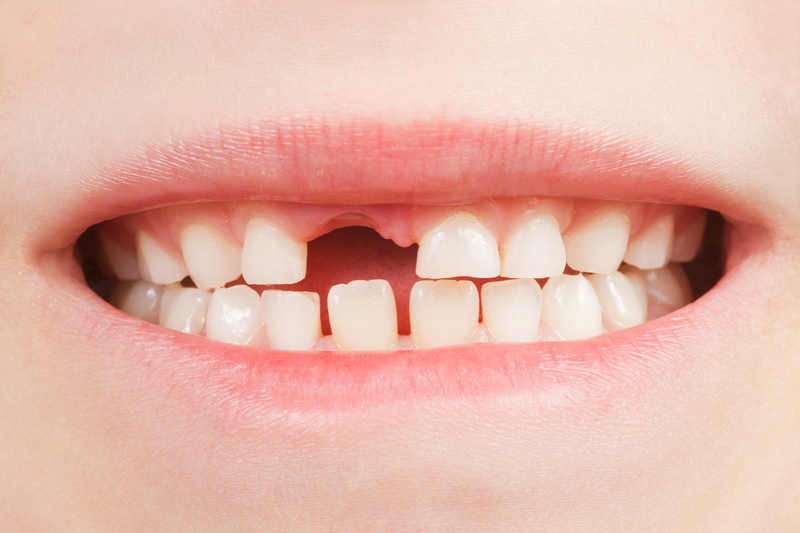
Whenever a child loses a tooth prematurely, a space maintainer may be needed to keep the space open so the permanent tooth can grow in correctly. Losing a baby tooth is a natural occurrence, but some baby teeth must be extracted due to dental decay. A space maintainer is a custom-made appliance that helps permanent teeth grow in correctly and prevent future oral health complications. If you are worried about the gap in between your child’s teeth, learn how a space maintainer can keep your child’s teeth straight and allow for proper tooth development!
Why Baby Teeth Fall Out Prematurely
Most children get their first full set of baby teeth by the age of 3, and these help them eat their food while serving as placeholders for their future permanent teeth. Occasionally, baby teeth are lost prematurely or permanent teeth erupt later than they should, so space maintainers have become a popular way to support the child’s mouth until the gaps are filled with permanent teeth. There are many reasons why children lose their baby teeth earlier than expected. For one, some experience trauma to the mouth, such as tripping or getting hit in the mouth with some object. Others lose teeth due to “baby bottle decay,” which occurs whenever a child falls asleep at either breast or bottle, or walks around with a bottle for large amounts of time. The sugar content in the milk causes enamel to decay and cavities to appear, which can lead to premature tooth loss. Genetic influences can also affect whether permanent teeth develop or not, which can leave gaps in the mouth. Although rare, some children suffer from oral infections that are severe enough to cause tooth loss, but this is not as common as an injury or baby bottle decay. Even though losing baby teeth prematurely is not inherently bad, the consequences of not having a tooth in the space where a permanent tooth will eventually erupt can cause some complications with malocclusion that will need orthodontic care later on. Space maintainers provide the mouth with the proper space for permanent teeth to erupt into while ensuring that other teeth do not crowd that area until the tooth develops.
How Space Maintainers Help
Space maintainers basically “hold space” for permanent teeth once a baby tooth has been lost prematurely. When adult teeth are ready to come into the mouth, there may not be enough room because of the lost space. For this reason, dentists recommend space maintainers to hold open any spaces left by the missing tooth. These devices are typically made of acrylic, with loops and bands made of steel wire to hold them in position. Space maintainers ensure that your child develops their permanent teeth in the right locations while giving support to the surrounding teeth. Teeth are notorious for moving or becoming loose without the support of surrounding teeth, so space maintainers also help other teeth stay in their proper places and not move into the gaps where the missing teeth were once located. Space maintainers aren’t for everyone, though. If your child loses a baby tooth shortly before a permanent tooth is expected to develop, a space maintainer isn’t necessary. For those patients whose permanent teeth won’t be developing for an extended amount of time, space maintainers come in handy to guide those teeth into proper alignment whenever they do erupt.
Type of Appliances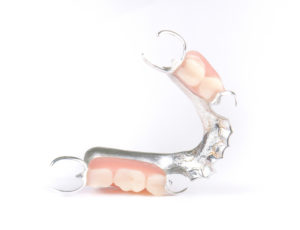
For those who choose space maintainers, they come in two different options: removable and fixed. Removable devices are made of acrylic and use artificial teeth to hold open the spaces. These are ideal for older children who are capable of removing and cleaning them on their own. For children with several missing teeth, partial dentures are another option to maintain the spaces in the mouth. Fixed maintainers are attached with dental cement to the teeth beside the gap. These are helpful for young children or those who have lost back teeth. Fixed retainers can be fitted on the upper or lower jaw to maintain space for front or back teeth. The device that your child will be given will depend upon the number and location of missing teeth in their mouth, but age is also considered, as well.
There are quite a few different options to choose from if your dentist recommends a fixed maintainer for your child. Some of the most popular options include:
- Lingual holding arch: Used to maintain space for lower back teeth on both sides.
- Band-and-loop device: Recommended when one or more baby molars are lost in one dental arch. Stainless steel wire that is held in place by orthodontic bands that allows the permanent tooth to erupt without blocking it.
- Distal shoe appliance: Fitted over the baby first molar and maintains the space for the permanent molar once the tooth is lost.
- Transpalatal arch: Fitted on the upper jaw to preserve space on both sides of the dental arch. Held in place by wire fastened around the surrounding teeth.
Each of these devices are custom-made to fit to your child’s mouth. The dentist will take impressions of your child’s teeth, then send that impression to the dental laboratory to create the appliance.
Advantages of Child Orthodontics
With the modern technology and tools that are available to dental patients, child orthodontics has become more popular and necessary to maintain the oral health of young kids. Especially if your child loses a baby tooth prematurely, visiting with an orthodontist early on can help detect hidden dental issues, observe the progress of incoming teeth, decrease the risk for permanent tooth extractions and guide incoming teeth into their ideal positions.
If your child is in need of a space maintainer or is having issues with crowded teeth, call Belmar Orthodontics at (303) 225-9016! Our team is dedicated to your oral health and is ready to help your family get the beautiful smile that they deserve!
Braces With Oral Health Problems
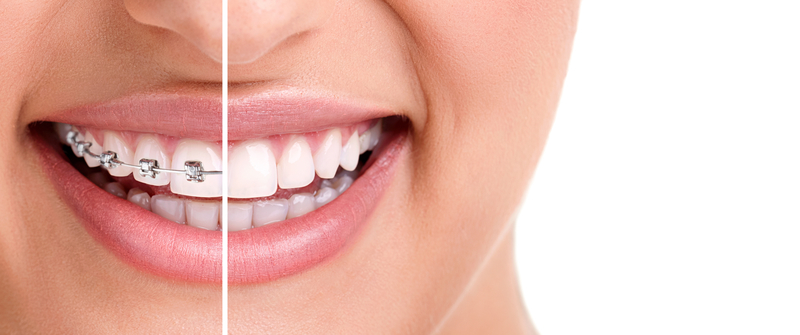
Did you know that your oral health can affect your overall health? Poor oral health can even worsen health conditions you already have such as diabetes or cardiovascular disease. That is because oral health and overall health are highly connected. Your oral issues can become better with braces, but that is only if certain oral health problems are corrected beforehand. Patients can also develop oral health problems if they don’t have the right knowledge with proper braces care. Use these tips to avoid oral health problems with braces and find out how we work around current problems to provide you with a straighter smile!
Oral Health Goals
Did you know that orthodontic treatment can give you a healthier mouth? We know that braces help straighten your teeth, but they can also improve the health of your gums and teeth. When you have crooked and crowded teeth, this makes cleaning your mouth more difficult. This can cause serious oral health problems, such as tooth decay, periodontal disease, and tooth loss. Whether you have straight or crooked teeth, before you let an orthodontist start working on you, there are some important oral health tips to be following before any work begins:
- Eat a healthy diet that limits sugary beverages and snacks
- See a dentist regularly for prevention and treatment of oral disease
- Brush teeth twice a day with fluoride toothpaste
- Floss daily
- Discuss changing certain lifestyle practices, like smoking and using oral piercings
Types of Braces
Braces are a big commitment, and you want to make sure you’re using the correct ones whenever you get them put on. Each of us is a different size and shape, and are mouths aren’t any different. Because of this, there are various types of braces for different sizes and shapes of mouths for children, teenagers, and adults. The four most common types of braces are: traditional, short-term, clear, and Invisalign/ClearCorrect.
Traditional braces are those that we see on a daily basis: a system of wires and brackets that are bonded to our teeth. This type of braces are the most cost-effective, reliable, and are best suited for severe orthodontic issues. Short-term braces are recommended for those patients who wish to align just their front six teeth-the ones that others see the most. These are used for the shortest amount of time (less teeth to align), but there is no adjustment to your occlusion (bite). So if you have a problem with an under/overbite, short-term braces may not be for you. Clear braces are similar to traditional metal brackets except that they use ceramic brackets that match the color of your teeth. These braces have a high aesthetic appeal for those who don’t want to be seen wearing braces, plus they are highly resistant to staining. Invisalign//ClearCorrect straighten your teeth without the traditional wire brackets, and are completely removable, which makes cleaning your teeth a cinch. This type requires more responsibility for the wearer, but if you’re committed to the strict wearing regimen, you can have a straight smile in as little as 12 months!
Taking Care of Your Braces
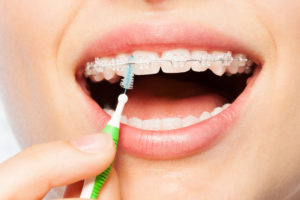
While similar to managing our oral health, maintaining our braces has a few extra steps. To maintain good oral health with braces, it’s important to adopt good oral hygiene throughout the entire process. Brushing after every meal is one of the most important but most overlooked steps in maintaining good oral health. When eating, food particles get stuck in between our teeth and our braces, which can cause staining and bacterial backup between our teeth. Using a regular soft brush in an up-and-down motion on each tooth will do the trick. Secondly, use threadable floss or a floss threader. These tools allow you to get between each tooth and underneath the wires to clean out any food that may be trapped there. Insert the threader between two teeth and move back and forth until the food is released. Lastly, use a proxabrush, or a “Christmas tree brush.” Place the proxabrush between two brackets, below the archwire, and brush up and down. Like the threader, this will also help loosen up any food that may be stuck between your teeth.
A great way to ensure that your braces don’t break and that you don’t get unwanted gunk stuck in them is to watch what foods you’re eating. Foods that are hard, sticky, or high in sugar should be avoided. Eating food that is high in sugar can cause cavities when wearing braces, which can lead to more dental work that you would need to have done. Furthermore, patients with braces should limit between meal snacks and avoid food that could bend the wires, such as caramel, nuts, chewing gum, ice, or popcorn.
When To See An Orthodontist
Now that we understand more about the importance of our oral health, plus the different types of braces, when should we make an appointment with an orthodontist? Many times, we only schedule a time to see an orthodontist whenever our teeth are crooked and we want them straightened. But there are other factors that influence when we should start thinking about getting in to see the doctor:
- Jaws that shift, make sounds, protrude, or are recessed
- Speech difficulty
- Biting the cheek or biting into the roof of the mouth
- Facial imbalance or asymmetry (features out of proportion to the rest of the face)
- Inability to comfortably close lips
- Grinding or clenching of teeth
As mentioned earlier, these are signs that your oral health might not be up to par like it should be. Meeting with your orthodontist and discussing these issues will help them better treat you with one of the four types of braces that we discussed previously. The sooner you get in to see your orthodontist, the sooner any pain or discomfort can be evaluated, treated, and extinguished.
Meet Your New Year’s Resolutions With Our Help!
Belmar Orthodontics can help you on your path towards having a straighter smiles and better oral health. With reputable orthodontists, manageable treatment plans, and services for children and adults, we can help you get the smile that you deserve! Call (303) 225-9016!
Dressing Up Your Smile During the Holidays

The holidays are here, which means parties, dinners, photo opportunities and more. Now is a great time to make your smile shine, and you can do that through orthodontic treatment. If you’re smile is lack-luster, consider our four orthodontic options that can help you have a straighter smile. For those already with braces, you can dress up your brackets with bright colors to reflect the season. Use these tips for getting a more beautiful smile with braces and having that show in your holiday snapshots this year!
Dress Up Your Smile with Orthodontics
The higher number of holidays during the winter season is believed to be because of the many pagan festivals that surrounded the Winter Solstice many years ago. That solstice happens in the third week of december, where there is Christmas, Hanukkah, New Years and other holidays all happening. With all those holidays and the gatherings that come with them, it’s likely to mean many opportunities for photos and showing off your smile. You want that smile to impress.
Studies show that people that straighten their smiles often feel more confident than those who don’t. That confidence can be visible even while you are currently getting orthodontic treatment. Straight teeth are so important to people that 87% of people are willing to forego something they want for a year or more to be able to get braces. If you have braces, not only is it something to be proud of, but something to be admired. If you don’t have braces, getting them is a great way to give yourself an amazing gift just in time for the holidays.

Your Treatment Options
In the past, metal braces were your only option. However, you have many cool options today that you can gift yourself such as:
- Traditional Metal Braces – These are the classic metal bracket and wire option that is most commonly chosen by patients. Patients who chose this option come in to have their wires tightened at each appointment.
- Ceramic Braces – These braces are a close cousin to metal braces. They have the same bracket and wire design of metal braces, except that they are made out of ceramic material. This helps decrease demineralization during your orthodontic treatment. Ceramic material is also naturally white, helping these braces to blend in with your teeth more than metal would.
- Lingual Braces – These are metal braces that are placed on the back of your teeth. Instead of just a square bracket, the metal must be custom-made to the shape of the back of your teeth. This is a discrete option that adults and teens love.
- Invisalign Treatment – This is the most invisible option available to our patients. Invisalign is a series of transparent aligners that you wear at night and throughout the day. You can remove them for eating, playing sports, cleaning your teeth and more.
If You Already Have Braces
Maybe you already have braces. You can still make your smile wow in pictures by taking care of your smile. If you have metal or ceramic braces, our patients love to get colored bands that reflect the colors of the holidays. You can make your bands green and red for Christmas, blue and white for winter or any color you would like. Colorful bracket bands are just one way you can dress up your smile.
If you already have braces, then you have already started on your journey to a better smile. Orthodontic treatment can correct mild to severe issues with bite and alignment, and can help correct speech impediments. It can bring the teeth and jaws into proper position, reducing your risk for oral health diseases such as tooth decay and gum disease. Straighter teeth are teeth that are easier to clean and less likely to have breaks and fractures from uneven mouth pressure.
However, if you want your smile to dazzle in photos and at holiday get-togethers, you have to take care of it. The best way to do that is by brushing and flossing your teeth. Those two simple steps should be dones several times a day to keep your brackets clean and your teeth polished. Patients should brush 3 times a day or more to dislodge food and to clean the teeth after meals. Flossing should be done 1-2 times a day. Even though it takes a bit longer to do, don’t skip this step! If you do, you miss cleaning 40% of your tooth surfaces that can leave them open to decay, erosion and staining. Those are not things you want in a holiday photo.

Better Health for the New Year
The end of the year is a time to start making goals for the new year. One of those goals can be focused around having better health in the new year. Many people don’t realize just how connected oral health is with overall health. Countless chronic conditions can become more mild or they can intensify depending on how well you are taking care of your oral health. For example, if you have diabetes, not taking care of your teeth and gums can lead to oral infections that are really hard to battle because you have diabetes. Your body is less able to fight those infections and the infections can spread, worsening your condition.
However, if you do the basics of brushing your teeth, flossing and visiting your dentist and orthodontist like you should, you can keep your oral health in great shape. That makes it so your smile is amazing when your braces come off instead of damaged or decayed. To get some tips for taking care of your braces or for starting on an orthodontic plan, call Belmar Orthodontics today at (303) 225-9016!
Fun Facts About Orthodontics
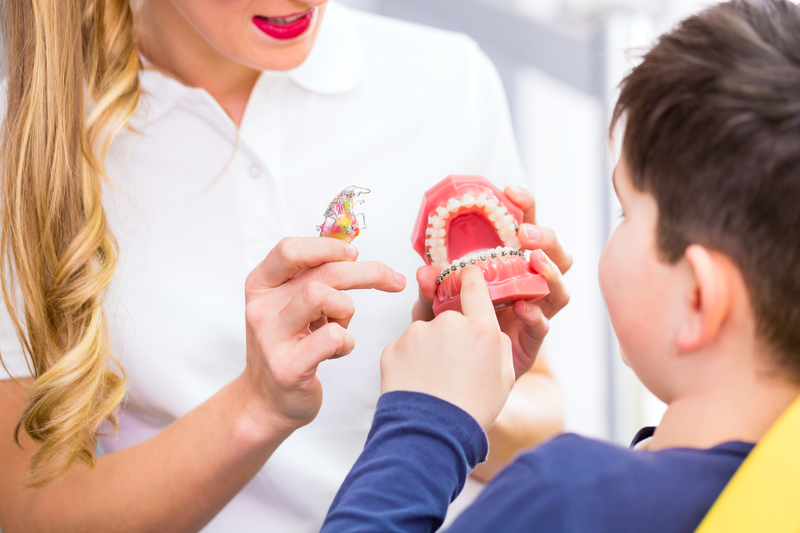
Did you know that an orthodontist is different than a dentist? Orthodontics is a dental specialty all its own, that has different goals and processes than what dentists do. There are many ways to fix the teeth and many methods that have been tried for many centuries. Find out the amazing history of orthodontics and some facts you may not know!
History of Orthodontics
People have been straightening their teeth since the time of the Ancient Egyptians, as can be seen from mummies from this era. Even the Romans and Etruscans used crude orthodontic straightening methods to get a better smile. Many philosophers hypothesized better ways to straighten the teeth. A Roman writer Celsus (1 A.D.) thought the teeth could be pushed into place. Pliny—around the same time—thought the teeth could be filed to be the ideal shape and size.
It wasn’t until 1728 that Pierre Fauchard—or the “Father of Dentistry”—made great strides with orthodontics. He first practiced crudely removing the teeth, replacing them straight, and tying them to other teeth so they could heal straighter. From his influence and others after him, modern orthodontics came to be. Matthaeus Gottfried Purmann developed dental impressions in the 17th century. In the early U.S. years, barbers and medical professionals experimented and performing small orthodontic treatments. This was until the first dental school was established in 1828.
Afterwards, J.S. Gunnell invented a form of headgear that was successful in straightening the teeth. Dental students and professionals figured out how to make a metal appliance to straighten individual teeth, which led to the now-used bracket and wire design in modern orthodontics. Before 1970, orthodontists wrapped wires around each tooth and required that headgear to straighten. This practice involved lots of metal in the mouth, which is why a better form (that we use today) was invented in the following years. Now, in the last 20 years lingual braces (braces behind the teeth) and Invisalign (transparent aligners) were invented to allow patients a hidden apparatus with orthodontics.
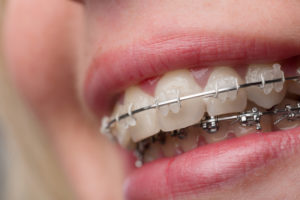
What Do Orthodontists Do?
Did you know that orthodontists are dentists? Every orthodontist is a dentist because they have completed dental school and then some. However, not all dentists are orthodontists. The standard requirements for dentists are to complete 4 years of undergraduate schooling and then 4 years at a dental school. They will have to pass exams and become certified to do dental work. Orthodontists do all of those 8 years, plus they complete 2-3 more years of orthodontics, training in bite and alignment correction and surgical orthodontics. All throughout their career, both dentists and orthodontists must do continuing education courses as well as pass tests to continue working.
An orthodontist will not fix your cavity even though they may spot the signs of tooth decay. Often, an orthodontist works closely with a dentist, as both professionals work on your mouth. What one professional doesn’t do, the other will do. Dentists do everything relating to tooth decay (cavities), gum disease and other oral health diseases as well as remedying dental emergencies. An orthodontist performs services that a dentist doesn’t do such as:
- Bite and alignment correction in children and adults (child orthodontics and adult orthodontics)
- Surgical orthodontics, which is surgery to help remedy a misaligned jaw or bite.
- Braces design, fitting, adjusting and complete process with lingual braces, ceramic (clear) braces, traditional metal, and Invisalign treatment.
- Training in placing temporary anchorage devices, which are tiny screws in the mouth that push, pull, lift or intrude teeth that are being straightened.
- Designing and creating retainer devices to keep bite, alignment and teeth in proper position.
Facts About Braces
- An orthodontist must complete 4 years of dental school, plus 3700 hours or specialized training in orthodontics to get their degree.
- There are more than 19,000 orthodontist members under the American Association of Orthodontics in the U.S., Canada and abroad.
- 1 in 4 people with braces are adults.
- Children make up another 1/4th of people wearing braces to correct bite and alignment.
- Because of modern technology, all four of your dental options (lingual, metal, ceramic and Invisalign) can straighten your teeth in about the same amount of time.
- It is possible to only get braces in either your upper or lower jaw if the other jaw is straight.
- The jaws stop growing as a child ages. That growth stops towards the end of the teenage years around 17 or 18. Straightening the teeth is effective for people after this age, but it may take longer than it would for children.
- Patients generally see their orthodontist every 6-10 weeks for braces adjustments. Patients with severe bite and alignment issues may need to come in more often.
- Orthodontists often usually have “DDS” or “DMD” after their names. This stands for “Doctor of Dental Surgery” and “Doctor of Dental Medicine”. Both are considered equal degrees, but the degree given depends on the dental school attended before orthodontic training.
- Materials used in metal braces are so light that they won’t set off metal detectors in airports.
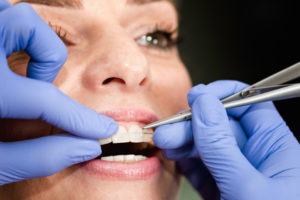
How Do Orthodontics Help People?
If you’ve never been to an orthodontist, you may wonder why you need one. Not everyone may need orthodontics to correct bite and alignment issues, but everyone should see an orthodontist at some point. The American Association of Orthodontics recommends that every person have an orthodontic visit between ages 7 and 8. This is prime time to detect bite and alignment issues that would lead to crooked teeth, speech impediments, oral hygiene diseases, and problems chewing, biting and functioning normally.
When issues are found, they can quickly be corrected so children can grow and develop normally. If a teen or adult wants to straighten their teeth to boost their confidence and success, they can receive braces starting around age 11. For specific questions about our orthodontic services, call Belmar Orthodontics today at (303 225-9016!
What Is an Orthodontist?

If you want to be an orthodontist, you have at least 10-12 years of schooling ahead of you. Orthodontists are very similar to dentists, but they perform completely different tasks in an office than a dentist would do. This is why you need to see both an orthodontist and a dentist if you have braces. See what services they provide that no one else can!
Want to Become an Orthodontist?
To become an orthodontist, a person has to commit to at least 10-12 years of education, training, fellowships and more. Even after that time, and orthodontist must continue testing and studying throughout the years in order to do orthodontics. An orthodontist is a professional that specializes in correcting crooked smiles, bite and alignment issues, jaw problems and aesthetics of the mouth.
They do this through braces, which commonly consist of metal bracket and wire appliances. Those appliances mold the teeth and jaws into specific alignments and positions. Through focused pressure with these mouth appliances, a person with major bite, alignment, or crooked teeth problems can find themselves with a beautiful, functional smile. This is especially beneficial for patients who have oral health problems that cause them speech impediments and difficulty biting, chewing, speaking and functioning normally.
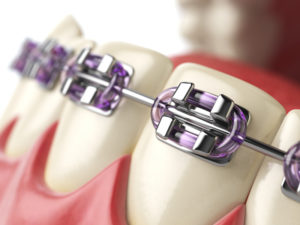
What Does An Orthodontist Do?
An orthodontist is a step above a dentist when it comes to their schooling. To become an orthodontist, a person must complete 4 years of undergraduate schooling at a university. They then apply for dental school and must be accepted. After 4 years of dental school, many students become dentists. However, orthodontists must continue to do at least 2 more years of orthodontic school and fellowships to do orthodontia as a profession.
Even though orthodontists are trained in dentistry, they do different work than dentists. They provide services such as correcting misaligned teeth and smiles, overbite, underbite, crossbite, and other alignment issues. Some are trained to provide surgical orthodontic procedures, or they work closely with an oral surgeon in correcting a misaligned jaw.
For patients who receive surgical orthodontics, an orthodontist will provide pre-surgical orthodontic care to align teeth and jaws as much as possible. A patient will then have oral surgery done to correct issues that can’t be done without surgery. Then, the jaws and teeth are aligned to their final, complete position through orthodontic appliances. If a patient doesn’t receive surgical orthodontics, they generally do 18-24 months of braces to straighten their teeth. Primarily, this is what an orthodontist does: they design braces (based on what type you pick) that fit your smile and that can shape it straight over the course of 1-2 years.
How It’s Different Than Dentistry
Both dentistry and orthodontics focus on oral health and improving a person’s smile. However, dentistry primarily strives to clean the teeth, fix tooth decay, perform root canals and treat gum disease. Patients also receive dental crowns, bridges and implants, and many cosmetic dentistry procedures. If you need teeth whitening or want to improve the look or health of your teeth, seek out a dentist. They can perform teeth whitening services, provide dental veneers and implants, and can help with oral health diseases.
However, if you need your teeth straight in the first place, you need an orthodontist. The American Dental Association recommends that every patient see a dentist at least twice a year to avoid major oral health diseases. You will need an orthodontist at various intervals in your life. However, you don’t see them as frequently throughout life like you would a dentist. When you have crooked teeth or problems with your jaws or alignment, you work with an orthodontist to fix the major issues. Then, a dentist fixes the more minor issues like the color of your teeth.
A dentist is not trained to straighten the teeth even if a dental office provides a transparent aligner service such as Invisalign. You always want to choose a trained orthodontist for properly straightening your teeth so oral issues don’t arise.
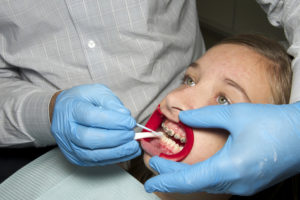
Do You Need Orthodontics?
When battling tooth decay, gum disease, bad breath and more, seek out a dentist. If you want to correct jaw, teeth, alignment, and bite issues, seek out an orthodontist. You may find yourself visiting both often if you receive braces as a child and then later as an adult or teen. Most orthodontists are trained to correct jaw and bite problems in children. You should always take your child in to see an orthodontist by age 7 if you already haven’t. The American Association of Orthodontics recommends this, as major bite and alignment issues of the jaws and teeth can be corrected easily when young. As a person grows older, the jaw hardens and becomes more permanently fixed, and oral health problems are much harder to correct.
If you are deciding to invest in braces, take a look at your teeth. Are they crooked? Do you find that either the upper or lower jaw overlaps the other significantly? Do you have problems speaking, eating, biting or chewing at times? You could benefit from orthodontics! Most people can significantly improve their oral health and their happiness (from having a beautiful smile) if they choose to see an orthodontist for help with their smile.
Dr. Hardy’s Office
Dr. Hardy is an award-winning orthodontist in Lakewood, CO. He is an active member of the American Dental Association and the American Association of Orthodontics. Dr. Hardy works with a team every day to make sure his patients young and old are cared for. At his center, he offers patients the option of getting ceramic, clear braces, traditional metal braces, lingual braces and Invisalign treatment. He can perform surgical orthodontics if needed and pediatric orthodontics. When choosing a center for your family, you want one that can treat patients of all ages and a center whose staff knows how to work really well with children. You can find that at Dr. Hardy’s Belmar Orthodontics office by calling (303) 225-9016!
Choosing a Good Orthodontist
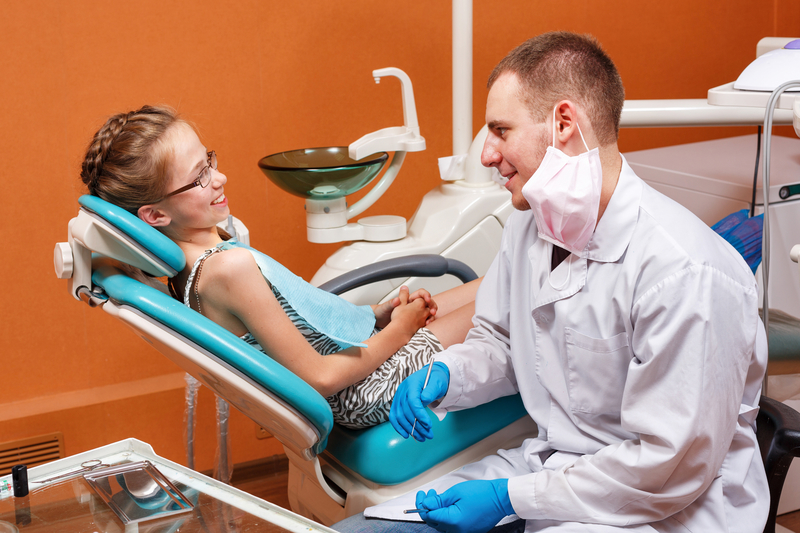
There are many orthodontists out there, but not all are created equal, and not all have the same training or experience as others. Just like dentists, only some are award-winning orthodontists (for good reason), while others are not. A good orthodontist needs to have specific training and credentials to work on your or your child. Their office needs to have specific equipment to perform the necessary work, and a good orthodontist will provide a wide range of services for their patients. Find out what a good orthodontist looks like and how to choose a good one from one you want to avoid!
Choosing to Receive Braces
If you have made the choice to get braces, we commend you! Braces is an amazing way to change your life for the better. Studies show that straightening your smile is directly related to increased confidence. The better a person’s smile looks, the more they smile and the more confident they appear to others as well. Studies by Invisalign and countless others have found that a straighter, more beautiful smile makes you appear happier, healthier, wealthier, and more attractive to others. 73% of people are also more likely to find you trustworthy.
Now that you have chosen to embark on this new journey of getting braces, you have to decide who you should get your orthodontic care from. All too often, dental practices have started offering orthodontics via transparent aligner systems or Invisalign. Even though we offer Invisalign at our center (and it is effective), the majority of dentists are not trained to perform orthodontics. It’s similar to a spa offering botox injections instead of a medical doctor that provides botox injections. They may have some training in oral health and dentistry, but dentistry is not the same as orthodontics.
You always want to choose a trained orthodontist to provide you orthodontic work, and not just a dentist (or even someone without a degree) to perform any work on your mouth. If you do, you take a serious health risk that your teeth will be messed up permanently or that you will have oral health complications. Always go to a certified and trained orthodontist for your orthodontic work.
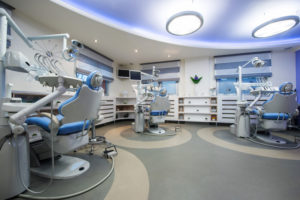
Training to Become a Good Orthodontist
Becoming a good orthodontist takes many hard years. A good orthodontist will receive an undergraduate degree and then will go on to be accepted into dental school. A good orthodontist will receive high marks in their dental school, and will have to be accepted into an orthodontic school afterwards. Some even go beyond their 10 years of base training to do fellowships and additional study. It takes an entire decade to learn how to straighten the teeth properly, even if orthodontic care may seem simple and straightforward.
Orthodontists deal with the health of a person’s mouth, which can affect their overall health, their confidence, and even if they are at risk for tooth decay, gum disease and more. Working with children in orthodontics can be even trickier, as many children require specific work to make space in the jaws for incoming teeth.
What Is Their Experience with Children?
The majority of good orthodontists work with children on a regular basis. However, there are some that have better training than others. You always want to look for a good orthodontist that has training to work with a child on their intellectual level. Children sometimes fear dental or orthodontic office or having work done on their mouth. We strive to provide a child-friendly atmosphere to our young patients to make them comfortable during their treatment.
A good orthodontist is one that can help your child feel at ease and confident about the smile they are getting. When choosing an orthodontist, observe how they act with your child. If they are warm and inviting, this can help children have a positive orthodontic experience for early orthodontic treatment and when they receive braces for straightening later on.
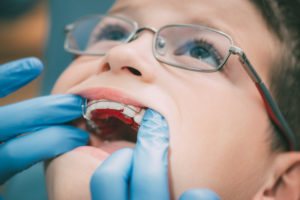
What Qualities Do We Have?
If you want a good orthodontist, give Belmar Orthodontics a try! Dr. Hardy is an award-winning orthodontist that treats patients at two different locations. He has extensive training in dentistry and orthodontics and actually runs a pediatric dentistry and orthodontics office alongside his wife. He treats pediatric patients and older at Hardy Pediatric Dentistry & Orthodontics and he treats patients of all ages at Belmar Orthodontics. Dr. Hardy offers every option available in orthodontics to his patients. That includes traditional metal braces, lingual braces, ceramic braces, Invisalign and Invisalign Teen, as well as retainer devices, TADs, and surgical orthodontics. All of these services required countless hours of training, testing and performance to become certified.
As we mentioned, you want an orthodontist who has won awards and who others are talking about. Dr. Hardy is board-certified by the American Board of Orthodontics. He is also an active member of the American Dental Association and the American Association of Orthodontics. He received the Everett Shapiro Award in Orthodontics as well as the Dr. Harold Berk Endowed prize Fund for Excellence in Research. He is also a member of many dental organizations that you can find here. He is extensively trained to work not only with teens and adults, but also children—even very young ones. Dr. Hardy also works alongside his wife often, who also has extensive training and psychology experience with young children.
We can talk about Dr. Hardy’s qualifications all day long, but the best way to know what a good orthodontist looks like is to come into the office and see for yourself. To schedule your free consultation or to learn more, call Belmar Orthodontics Orthodontist in Lakewood Colorado today at (303) 225-9016!
Why You Need Professional Orthodontic Care
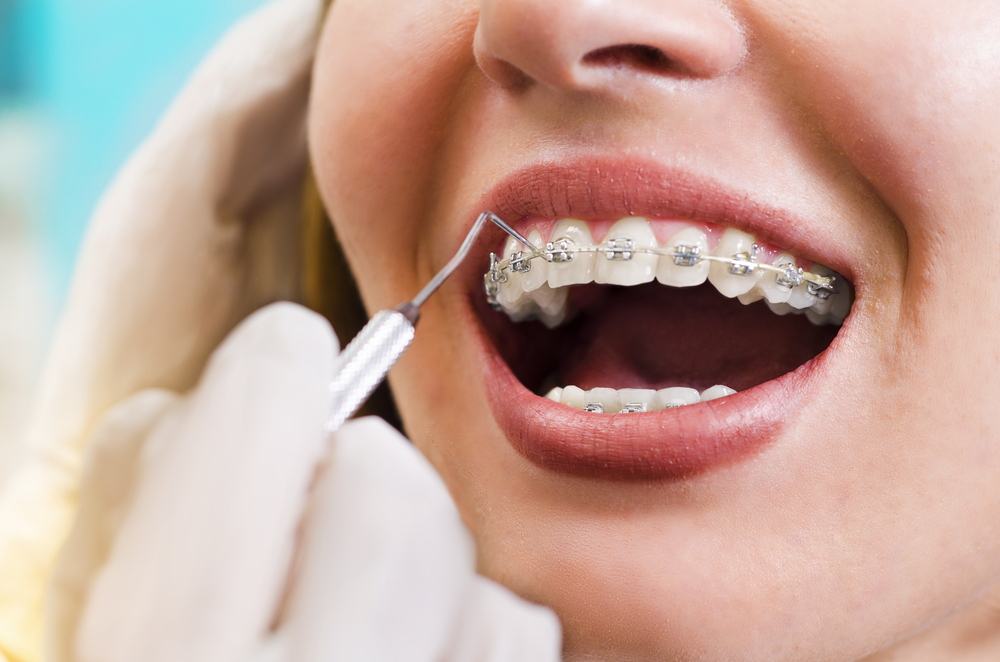
Why is professional orthodontic care so important? The economy has fluctuated from good times to bad times over and over in the last couple of decades. Some people try to cut corners when it comes to achieving healthy smiles by straightening their teeth themselves. Do “cutting corners” and “healthy” go hand-in-hand? Not at all! Only a professional orthodontist is trained to provide you a completely healthy and straight smile that you can’t get anywhere else. Proper orthodontic care can ensure that your teeth stay healthy and free from gum disease, tooth decay and tooth loss. It will also ensure that your teeth move appropriately so that your bite, alignment and function work the way they were designed to. At Belmar Orthodontics, we can provide you a smile that you will cherish the rest of your life. Find out why professional orthodontic care is worth the time, money and effort to achieve a wonderful smile.
Cutting Corners On Your Oral Health
We all know that problems will arise if proper oral hygiene habits aren’t followed. That includes brushing and flossing several times a day (after every meal if possible), seeing your dentist and orthodontist as needed, and making sure the teeth stay clean, straight and healthy in general. You would never want to save some time by cutting out brushing your teeth altogether right? How about flossing? Or maybe never seeing a dentist? There are major problems that can arise from choosing to cut corners on your oral health. Some of the main problems are gum disease and tooth decay that can literally rot your teeth out.
Gum Disease
Gum disease affects over 64.7 MILLION American adults. That means that there are many millions of Americans not taking proper care of their teeth. What does gum disease cause? It begins with gingivitis, or a buildup of sticky bacteria-filled plaque that coats the teeth and irritates the gums. Without cleaning the teeth often enough, the gums will begin to become red, inflamed and even bleed frequently. Skipping on the hygiene will make gingivitis more severe until it becomes full-blown gum disease, also known as periodontitis. At this stage, the gums will recede and the teeth can literally fall out. Yikes! Nobody wants that right?
Tooth Decay
Tooth decay is a problem that’s not far behind gum disease. It also has its beginnings when a person chooses to skip on their oral hygiene practices and keeps doing it. That sticky plaque that coats your enamel is a mix of bacteria and sugar that is actually an acidic substance. The acid will erode your hard tooth enamel and eventually seep into the soft center of your tooth where it will accelerate tooth decay.
Do-It-Yourself-Orthodontics
Gum disease and tooth decay are both serious conditions that you want to avoid at all costs. You only get one set of teeth, so the goal should always be to keep them healthy, right? Cutting corners (even simply skipping cleaning the teeth) causes major damage to your oral health. Do-it-yourself-orthodontics is a new trend that has popped up on the scene. ABC news reported on this trend and how damaging it can be to your oral health. Many people wanted to cut corners with proper orthodontic care and do their own straightening at home using crude methods with rubber bands, fishing line, paper clips and any other material you could think of.
Not surprisingly, many patients (especially adolescents) who attempted to do their own orthodontic care damaged their teeth “so extensive[ly] that teeth cannot be saved.” That comes straight from the president of the American Association of Orthodontists. Do-it-yourself methods of orthodontics are bound to lead to many more oral health problems than you could have ever imagined. So far, it has proved to be disastrous for those who attempt to cut corners. Remember, cutting corners on your health is just that…cutting corners. Nobody comes out a winner.
Proper Orthodontic Care
When you only have one set of pearly whites, why take a chance on losing them? Orthodontists must extensively train for years and attend dental school. They then take an additional 2-3 EXTRA years to study orthodontic practices and how to keep your mouth the healthiest it can be. You get what you pay for and if that’s trying to straighten your own teeth with fishing line, you can bet that you’ll have a low-quality results. With professional orthodontic care, you’re going to get a professional and effective experience. Plus, you’ll actually save yourself time, money and risk of disaster by investing in orthodontic care the proper way.
The cool thing about our orthodontic office is that we offer more than just traditional metal braces. If you want to straighten your teeth more discreetly (or not have anyone know), we have Invisalign transparent aligners, lingual braces, ceramic clear braces, retainers and more. At Belmar Orthodontics, you can be sure to get a beautiful, straight smile AND keep all of your teeth healthy and strong for years to come. Simply call our office at (303) 225-9016 for your free consultation!
What is Keeping You from a Straight Smile?

Everyone deserves a smile they are proud of and eager to share–orthodontics can get you there! What is keeping you from your straight smile? Whatever obstacles you feel are between you and a beautiful, healthy, functional smile, let our Belmar Orthodontics team show you how you can overcome them! Orthodontic treatment isn’t just for growing mouths, but for adults too! Learn how we can help you get the smile you have always wanted, or had but have lost over time.
A Case for Orthodontics
While some may think that orthodontics is simply for improving the esthetical beauty of their smile, the truth is that orthodontics is necessary for optimal health. Orthodontics helps to prevent and treat oral irregularities to straighten teeth, correct irregular bites, close gaps between teeth to aid with gum health, and to bring jaws into proper alignment. Crooked teeth put your overall health at risk. Crooked teeth are also harder to keep clean, run the risk of severe tooth decay–and ultimate tooth loss–and put you at great risk for periodontal disease. Periodontal health contributes to your overall systemic health. Periodontal disease puts you at an increased risk of cardiovascular disease, diabetes, and adverse pregnancy complications.
Worried You Can’t Afford Orthodontics?
Our Belmar Orthodontics staff understands the financial worries patients have about committing to orthodontic treatment. But, small orthodontic issues can become bigger, more expensive problems down the road if they aren’t addressed. At Belmar Orthodontics, we do not want these expenses to compromise your ability to obtain good oral health or a beautiful smile. We accept cash, check, and credit card payments, but we also offer customized-payment plans for qualified applicants as well. Our practice also accepts most dental insurances. Please contact our office to learn more about our payment plans and how orthodontic treatment can work with your budget. We work with you to establish a treatment plan/payment plan that works for your budget. Smart planning and budgeting can offset some orthodontic costs and make the expenses easier to handle. During your consultation, we can help talk you through your options for care. Get the information you need to start financial planning and to get the treatment you need, when you need it!
Self-Conscious About Wearing Braces?
If you are delaying orthodontic treatment because you feel self-conscious about the idea of wearing an orthodontic apparatus, you are not alone. The good news is, technology has make leaps and bounds from where it was even a decade ago and now you have discreet options to choose from that can actually render your braces almost indetectable! The amount of adults who want to invest in their oral health is on the rise and adults now make up over 50 percent of orthodontic patients. One of the main reasons for this increase is the advancement in the design of braces that make them less noticeable. Belmar Orthodontics offers a variety of treatment options – including traditional braces, ceramic clear braces, Incognito Lingual Braces and Invisalign® – and prioritizes patient education so the patients themselves can make the final decisions regarding their orthodontic care.
Experience and Technology You Can Trust
Look no further! Belmar Orthodontics offers you state-of-the-art technology with expert care and services. Board Certified by the American Board of Orthodontics , Dr. Hardy is an award-winning Lakewood orthodontist and an active member of the American Dental Association and the American Association of Orthodontists. Dr. Hardy works with an expert team of dental professionals at Belmar Orthodontics to create a comfortable and personalized experience for each of his patients. Dr. Hardy believes that your smile plays an essential role in your overall health, function, and self-esteem. They have experience with a variety of bracket systems for improving your smile that are recommended based on your goals and specific needs.
Call for an Orthodontics Consultation
At Belmar Orthodontics Lakewood, we want you to feel confident in your smile. We want you to want to share it with others. We are dedicated to helping you achieve a smile that you are confident in sharing–not only for the beauty of it, but from the excellent health behind it. Dr. Hardy and our team of dental professionals at Belmar Orthodontics Lakewood are dedicated to giving you both cosmetic and functional results with a treatment process that you are comfortable with. We do this through open communication, patient education and cooperative treatment planning. At Belmar Orthodontics in Lakewood, you can trust that you are getting the quality of care you deserve in a warm, relaxed atmosphere you will enjoy visiting. If you are interested in how we can help improve your smile, please contact our office today. We are happy to answer your questions, and we can help you schedule a one-on-one consultation with Dr. Hardy to discuss your unique orthodontic needs and goals.
Boost Your Child’s Self Esteem with Orthodontic Treatment

Lakewood orthodontic treatment can help your child boost his self-confidence with the power of a straight, healthy smile. In a recent study published in the American Journal of Orthodontics, they showed how dental crowding and poor dental aesthetics is directly related to a decrease in an individual’s quality of life. In today’s competitive world, you want to empower your child with everything you can to feel confident about themselves. Developing a healthy self esteem is a more challenging process for some. Ease some of the difficulty by eliminating one of the factors that can impact it. Correcting smiles today can be done quickly, comfortably, with color and expression or with quiet subtly. Learn about your options and how you can help your child feel confident about sharing her smile more readily.
Lakewood Orthodontic Treatment Boosts Self-Esteem
Your smile is the first thing people see when they meet you. So much is communicated through your smile–your energy, your confidence, even your dedication to taking care of yourself. Taking the time to address orthodontic issues will eliminate any fears or insecurities you have been living with, freeing you to share your smile with everyone you come in contact with.
Being Eager to Speak and Smile
When your child is proud of his/her smile it affects how they use it. Research has shown that children who are not happy with the appearance of their teeth will avoid smiling with their teeth and may even withdraw from their peers. Often, they will hold back from speaking because of feeling self conscious about crooked teeth. Orthodontics gives your child self-confidence that may be lacking from not feeling comfortable with his smile. In this competitive world, we want to give children every chance they can to succeed. Lakewood orthodontic treatment aids in both physical and mental health.
Orthodontic Treatment is Not Just for Cosmetic Benefits
While we have discussed many of the cosmetic benefits of Lakewood orthodontic treatment, it is not the main reason why orthodontic treatment is advised. Orthodontic treatment is necessary for oral wellness. Misaligned teeth can lead to challenging health problems that impact chewing, swallowing, nutrition, and speech. Misaligned teeth also expose you to more risk for tooth decay, TMJ jaw-pain and chronic headaches from malocclusion.
Technology for Your Success
If you, or your child, are concerned about the options for braces today consider the amazing technological advances that we can afford you at Belmar Orthodontics. Advancements have transformed available orthodontic technology and treatments resulting in more patient-friendly, discreet and effective bracket systems. Braces are smaller, smoother, more efficiently adhered, healthier for the gums, and (some options) nearly invisible. Clear braces are fabricated to match your tooth’s natural color and have really made adult treatment more appealing. Newer still, is Invisalign, a system to move teeth without any braces. The archwires that straighten teeth today are not only more comfortable to wear, they also require less energy levels over longer periods of time. Some orthodontic wires even use the temperature of your mouth to activate tooth movement. These advancements in technology translate into more comfort for you, less time in an office chair, and quicker, lasting results.
Call for an Orthodontic Treatment Consultation
If you are considering Lakewood orthodontic treatment, but aren’t sure if you need it, call for a consultation today. We can evaluate your need for orthodontics as well as discuss your options for orthodontics today. Life with braces brings exciting changes, and sometimes some challenging adjustments too, but the end result is a healthier you! Belmar Orthodontics can help you obtain a healthy, functional, attractive smile. If you think you need braces, our online patient education can help answer any questions you may have, and our friendly staff is always available to help. Call 303.225.9016 today to learn more about braces or to schedule an appointment. Dr. Hardy is committed to your care and will help you reach your smile goals as quickly and efficiently as possible if you need braces.

